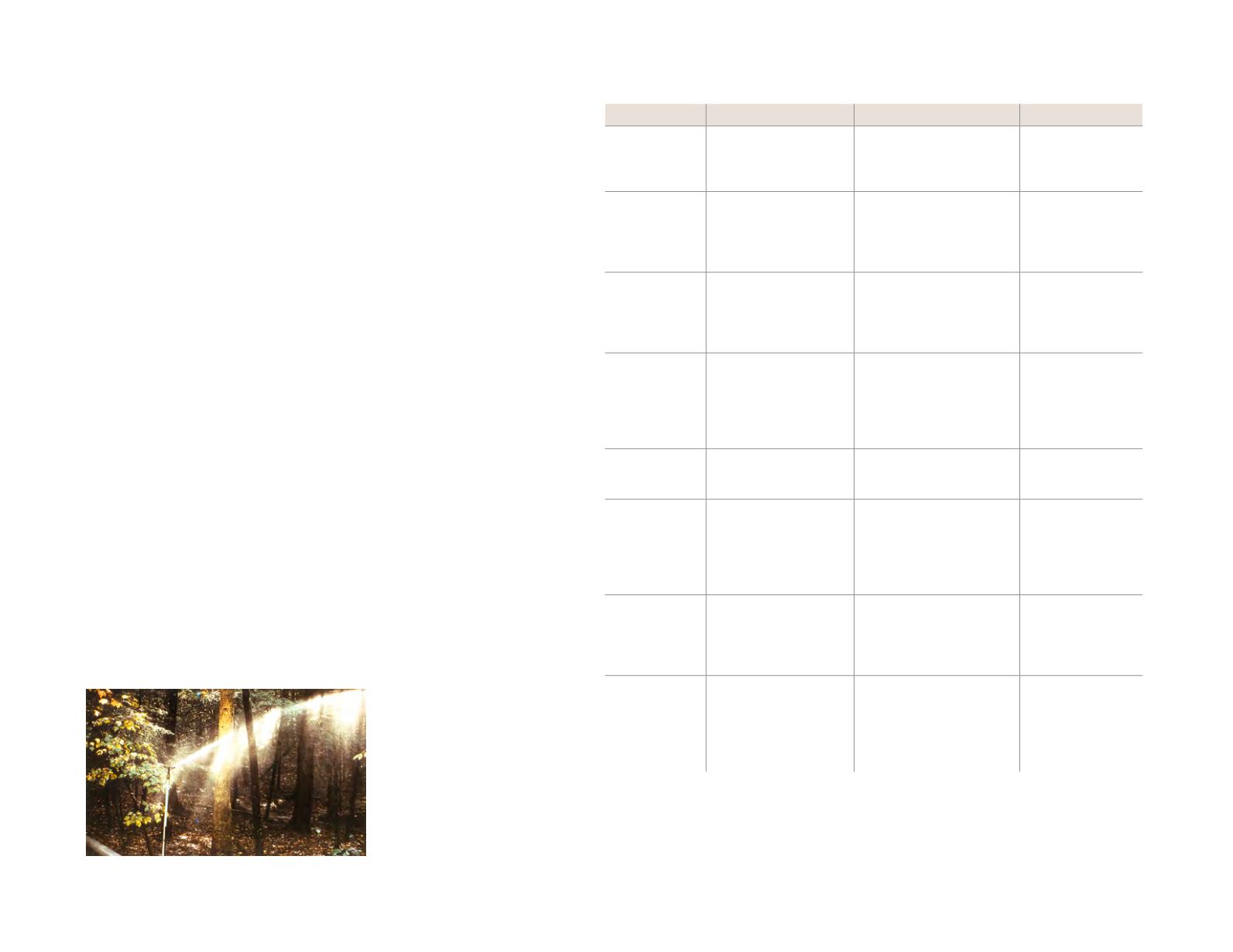
montgomery county today
149
Almost all public sewage systems constructed in the county
discharge treated wastewater to surface waters . In fact, 42 of
the 43 public treatment plants within the county discharge their
effluent directly to a waterway. Land disposal of wastewater
can be an appropriate alternative to stream discharge systems.
However, due to the large land area required for these systems,
this alternative is more appropriate for individual residential,
non-municipal, and small municipal systems, or in cluster-type
developments in rural resource areas, or in rural areas where a
group of failing on-lot systems needs to be addressed. Spray and
drip irrigation systems are the most common forms of land
disposal options.
New and Alternative On-Lot Sewage Options
Individual on-lot systems are located on a developed lot and
employ either subsurface or surface disposal of the treated
effluent. Septic systems are one of the most common types of
on-lot sewage facilities. They employ a treatment tank that
allows for liquid waste to percolate through the soil where it is
neutralized and broken down further.
There are several variations from a septic system that are driven
by soil, site, and operational conditions. The majority of the
county’s soils are classified as having limitations—sometimes
severe limitations— for on-site disposal, due to shallow depth to
groundwater. Therefore, very few new ‘at grade’ subsurface
disposal systems are installed today in the county. Instead,
mound systems, which include a sand and gravel bed raised
above the ground surface, are more common. Sewage treatment
technology has progressed to the point where environmental
constraints such as poor soil types or steep slopes or the lack of
sewage treatment capacity in municipal systems may no longer
preclude growth.
NAME
DESCRIPTION
ADVANTAGES
DISADVANTAGES
Bed/Trench
Effluent from the septic or
aerobic tank is treated in the
bed/trench media and the
surrounding soil.
Commonly used, minimal
maintenance
Requires a relatively deep
limiting zone
Contour System
Effluent is spread over a broad
area of buried pipe in a shallow
trench that follows the contour
of the land.
Larger area for effluent dispersal
than most systems.
Systems that are too long
may require
pressurization, requires a
level bottom of the
trench.
Drip Irrigation/
Trickle Systems
Applies pretreated wastewater
to soil slowly and uniformly
through a network of thin,
flexible tubing placed at
shallow depths in the soil.
Minimal site disturbance, flexible
tubing can be placed around trees
and shrubs, and complex terrain.
Possibility of clogging.
Gravelless and
Chamber Systems
Vaulted cross-section, flat,
uncontained bottom, uses a
material other than gravel in
the trench, provide some
capacity to store effluent until
it can be absorbed into the soil.
Faster installation and increased
volume of void space per unit
length compared to conventional
trenches.
Cost.
Elevated Sand
Mound
Mound consists of a raised
drainfield, sandfill on top of a
gravel-filled bed.
Overcomes site restrictions
(limiting zones due to unsuitable
soils).
Aesthetics, cost.
Vapotranspiration
Employ the combined effects of
evaporation from soil and
transpiration from plants to
dispose of wastewater effluent.
Can be used on sites with very
porous soils and in close proximity
to water wells (50 feet).
Not as effective in areas
with high rainfalls, high
humidity, low average
daily temperatures and
low levels of solar
radiation.
Pressure/Low
Pressure
Shallow, dosed soil absorption
systems.
Can be specially designed to
overcome site constraints such as
high water table, can be located on
sloping ground or on uneven
terrain.
Cost.
Recirculating Sand
Filter
Septic or aerobic tank to
remove solids, effluent is
pumped to a sand filter tank,
effluent can be recirculated
through the filter multiple
times.
Higher quality effluent due to the
recirculation.
Requires annual
maintenance and the sand
must be replaced roughly
every 10 years.
A spray irrigation system
FIGURE 114:
Dispersal Options for On-Lot Sewage Facilities


